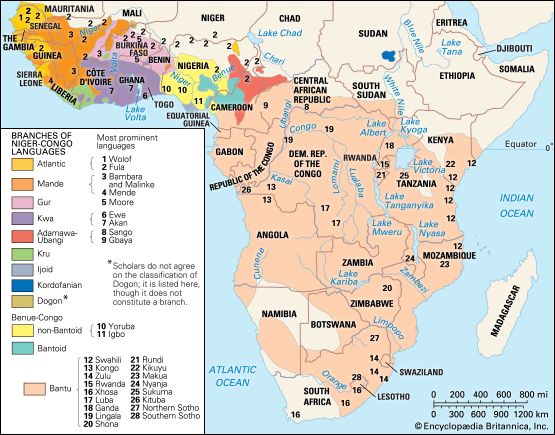Mande languages
Our editors will review what you’ve submitted and determine whether to revise the article.
Mande languages, a branch of the Niger-Congo language family comprising 40 languages spoken by some 20 million people in a more or less contiguous area of southeastern Senegal, The Gambia, southern Mauritania, southwestern Mali, eastern Guinea, northern and eastern Sierra Leone, northern Liberia, and western Côte d’Ivoire. Substantial numbers are also found in eastern Guinea-Bissau, southern Guinea, and western Burkina Faso; and there are very much smaller, isolated pockets in northern areas of Ghana, Togo, and Benin and in southwestern Niger and northwestern Nigeria.
Many scholars divide Mande into western and eastern groups. The larger western group of 27 languages includes several estimated as having more than a million speakers: Bambara (which has four million), Malinke, Maninka, Mende, Dyula (which is used as a trade language by four million people in northern Côte d’Ivoire and western Burkina Faso), Soninke, and Susu. The smaller eastern group consists of 13 languages, only one of which, Dan, has a million speakers.
It is interesting to note that several independent writing systems based on the syllable were developed by speakers of Mande languages. The best-known is the Vai script, but Mende, Loma, and Kpelle, also have their own scripts.

Mande languages typically have seven vowels, though this varies from five in northern areas to nine in the south. The consonant system usually includes labiovelar stops and pairs of voiceless/voiced fricatives and stops. Mande words frequently have a CVCV (consonant-vowel-consonant-vowel) pattern. Often the second vowel is the same as the first, and the medial consonant tends to be a glide or a liquid. Most Mande languages have a two-tone system, though up to four levels are found. The tonal system marks grammatical rather than lexical distinctions.













